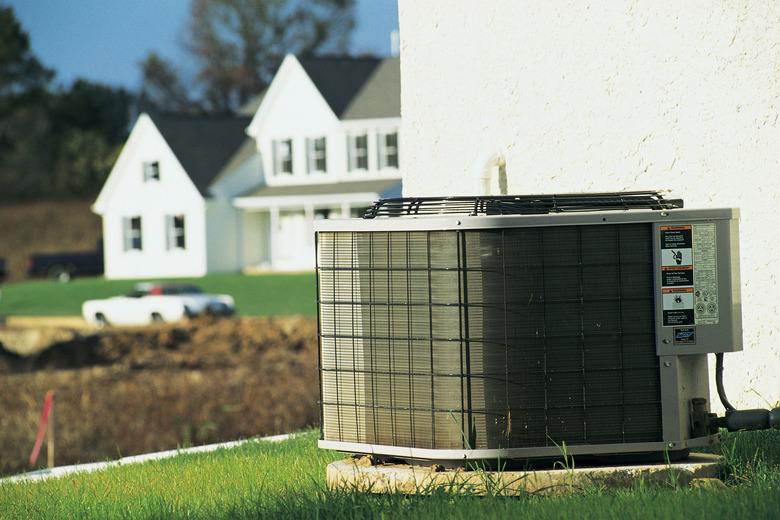How To Recycle Air Conditioning Water Condensation
The condensation produced by most air conditioning systems is drained into the sewer, and the water is lost. Many people do not realize that this water, known as condensate, can be recycled for uses that do not involve human consumption. The most common household use is for watering house and garden plants. Recently, businesses and public buildings have been reducing their consumption of potable water by harvesting condensate on a large scale for uses other than drinking.
Condensate
Condensate
Central air conditioning systems pull humid, warm air from a space and turn it into cool air that is blown back into the space. When this humid, warm air hits the refrigerated air on the coils of the system, the water vapor at the coils turns to liquid. In turn, this liquid must be drained away from the coils to prevent damage to the mechanical parts of the system or to prevent water damage to the structure around the air conditioner. The amount of condensate produced by an air conditioner can range from 5 to 20 gallons per day for a house to millions of gallons per year for large structures such as apartment buildings, schools and businesses.
Collection Barrel
Collection Barrel
Virtually all air conditioning systems that produce condensate have some sort of drain line. In a home, this is usually a hose that drains from near the coils on the system. Typically, this hose flows into a floor drain, sewer line or simply outside into the yard. A simple way to recycle this condensate in a home is to have the drain line run into a rainwater barrel or other storage container. Given that the system can produce up to 20 gallons of water a day, this can be a significant recycling of water. A drain line into a barrel, however, must be monitored and used regularly to ensure that the barrel does not overflow and cause water damage.
Condensate Pump
Condensate Pump
Sometimes a condensate pump is needed to drain the water to a particular location if the condensate water needs to flow uphill. For example, if the condensate drains into a basement, a condensate pump will be needed to pump the water up and out of the basement and into the yard or wherever it is needed. Some will use this pump to drain the water directly into an irrigation system to water gardens, trees and other plants. There are many types of pumps available to accommodate the needs of the consumer, and these pumps can be easy to install and use.
Commercial Condensate Harvesting
Commercial Condensate Harvesting
Some businesses and public buildings are recycling condensate on a large scale. This becomes almost a necessity in areas hard-hit by droughts or access to water is difficult. For example, city officials in Houston, Texas, are using vast storage tanks and pumps to harvest condensate from public buildings. At Rice University alone, it is estimated that up to 12 million gallons of water can be recycled annually. The condensate is most commonly harvested for use in power plant cooling towers that would otherwise use tap water. Care is needed if condensate is to be used for drinking or washing as it can harvest bacteria and will need treating.
References
- Alliance for Water Efficiency: Condensate Water Introduction
- ASHRAE: AHU Condensate Collection Economics: A Study of 47 U.S. Cities
- Water Pumps for Garden Needs: The Usefulness of Condensate Removal Pumps
- KUHF Houston Public Radio: Reusing Air Conditioning Condensation To Save Water
- Environmental Leader: Air Conditioning Condensate Recovery
Cite This Article
MLA
Peterson, John. "How To Recycle Air Conditioning Water Condensation" sciencing.com, https://www.sciencing.com/recycle-air-conditioning-water-condensation-23439/. 24 April 2017.
APA
Peterson, John. (2017, April 24). How To Recycle Air Conditioning Water Condensation. sciencing.com. Retrieved from https://www.sciencing.com/recycle-air-conditioning-water-condensation-23439/
Chicago
Peterson, John. How To Recycle Air Conditioning Water Condensation last modified March 24, 2022. https://www.sciencing.com/recycle-air-conditioning-water-condensation-23439/
